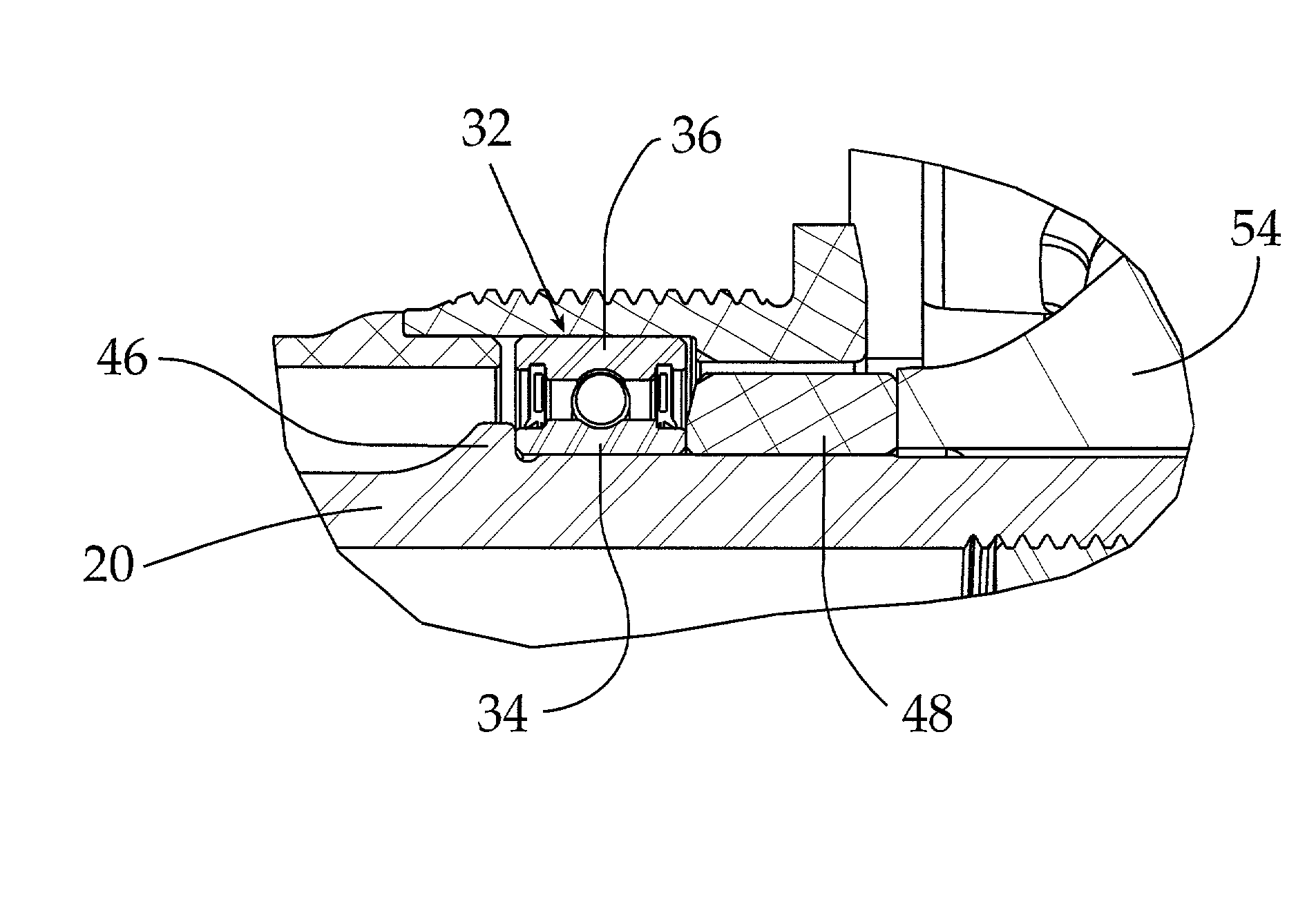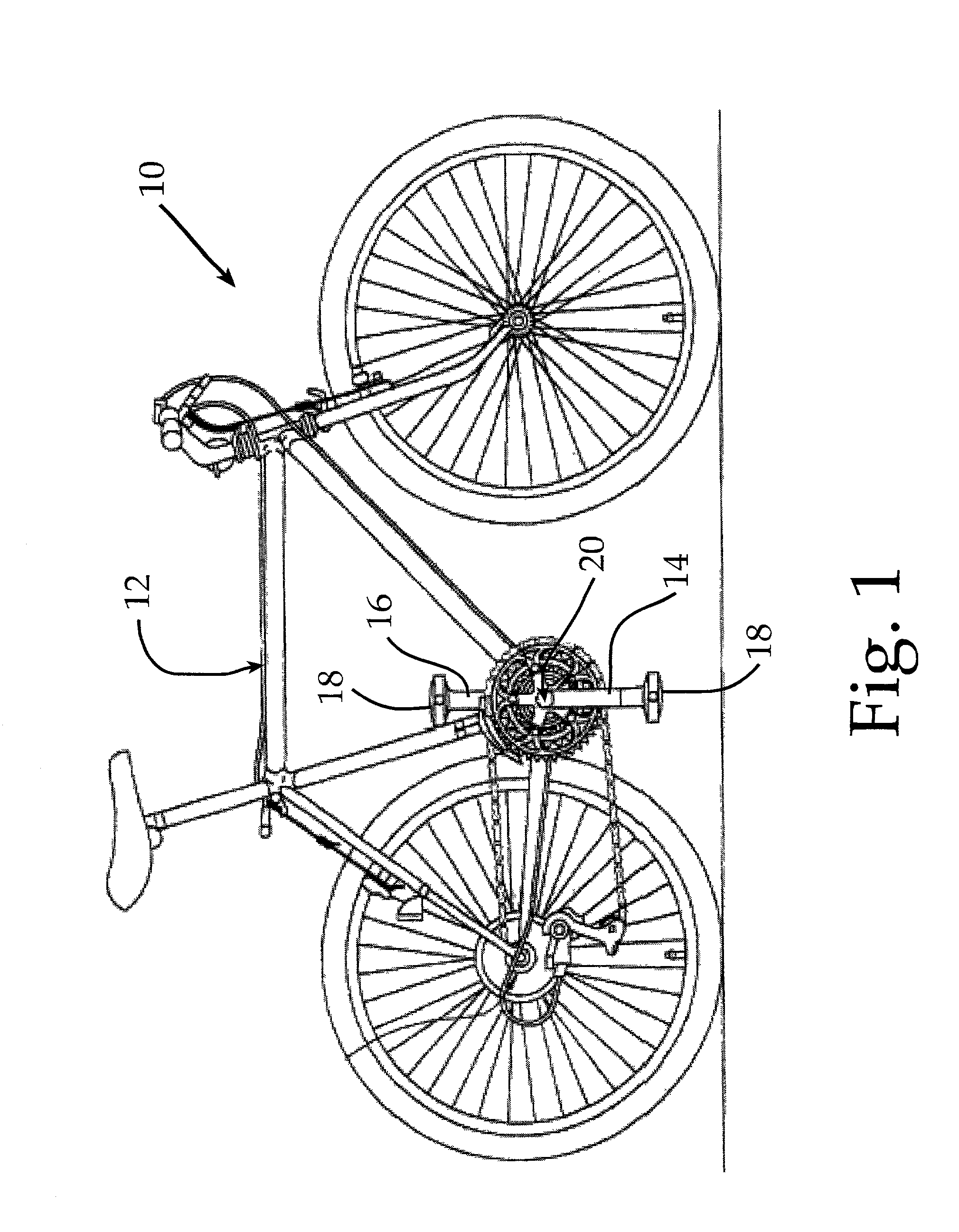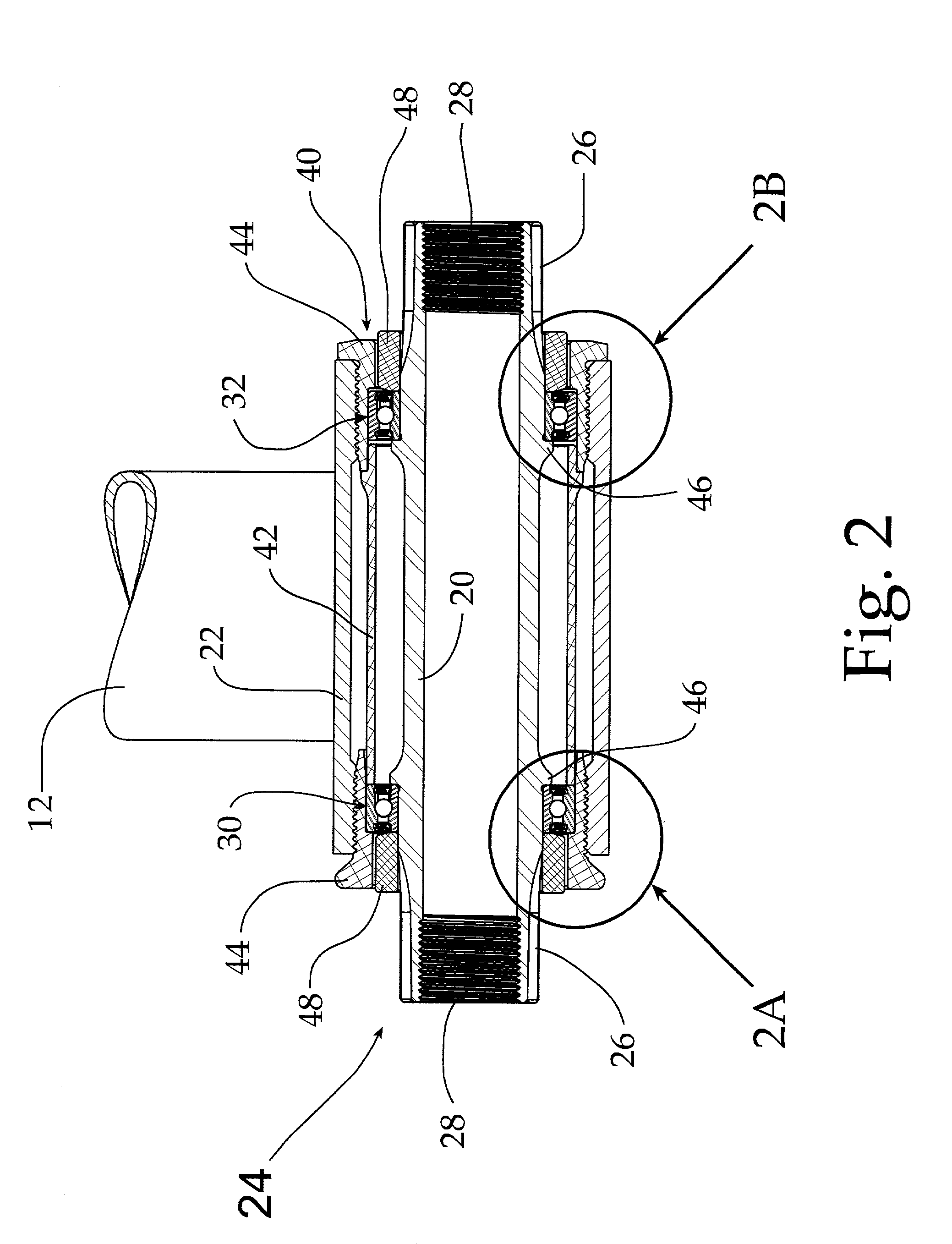Bicycle crank axle bearing assembly
a crank axle and bearing technology, applied in the direction of bicycles, rigid support of bearing units, transportation and packaging, etc., can solve the problems of adapters, more likely to be damaged, and insufficient support, so as to achieve tight control of manufacturing dimensions and tolerances
- Summary
- Abstract
- Description
- Claims
- Application Information
AI Technical Summary
Benefits of technology
Problems solved by technology
Method used
Image
Examples
first embodiment
[0032]On top of FIG. 2 there is shown a tube forming part of the bicycle frame 12, attached to a tubular sleeve 22 containing a bottom bracket assembly generally indicated as 24.
[0033]This first embodiment of a bottom bracket assembly according to the present invention includes the spindle 20, preferably of steel, which has adapting portions 26 on both axial ends to receive crank arms. The adapting portions 26 comprise an outer portion adapted to be received in the hub portion 54 of the cranks 14, 16 and an inner thread 28 for fixing the cranks to the spindle.
[0034]The spindle 20 is mounted in the bottom bracket by means of two cartridge bearings 30, 32 arranged near the ends of the bottom bracket assembly 24. Cartridge bearings 30, 32 are sealed cartridge bearings, available as readily assembled units. As can be seen in FIG. 2A, which is an enlarged view of the area 2A of FIG. 2, each cartridge bearing 30, 32 comprises inner and outer bearing races 34, 36 with bearing balls 38 ther...
third embodiment
[0052]As can be seen in FIG. 5, spindle 20 is mounted with cartridge bearings 30, 32 in outer bracket portion 40. In the third embodiment the outer bracket portion 40 only comprises one adapter cup 44. The other adapter cup is integrated with the cartridge shell to form a single component 72. As can be seen in the enlarged view of FIG. 5A, this configuration produces a bottom bracket assembly in which the outer race 36 of the right end bearing 32 can float axially. Combination element 72 has a bearing stop 50 to limit axial movement of the inner bearing race 36 to one side. On the other axial side of the outer bearing race 36, the outer bracket portion is open.
PUM
 Login to View More
Login to View More Abstract
Description
Claims
Application Information
 Login to View More
Login to View More - R&D
- Intellectual Property
- Life Sciences
- Materials
- Tech Scout
- Unparalleled Data Quality
- Higher Quality Content
- 60% Fewer Hallucinations
Browse by: Latest US Patents, China's latest patents, Technical Efficacy Thesaurus, Application Domain, Technology Topic, Popular Technical Reports.
© 2025 PatSnap. All rights reserved.Legal|Privacy policy|Modern Slavery Act Transparency Statement|Sitemap|About US| Contact US: help@patsnap.com



